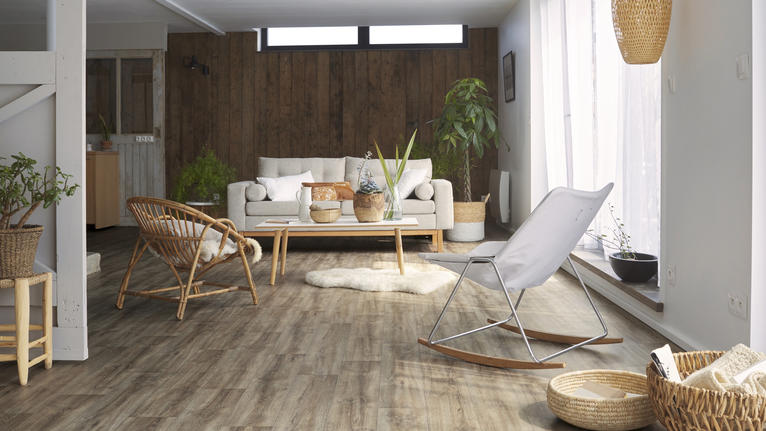
Vinyl Flooring History
Vinyl flooring has become an everyday feature in buildings and homes across the world thanks to its many aesthetic and technical advantages. A story of industry's ingenuity and creativity in developing flooring to meet the needs of people's evolving lifestyles.
The roots of a new material
Discovered by a French physician in the 19th century, the first experiments in vinyl began in the 1930s when it made its first public appearance at the 1933 exhibition “Century of Progress” in Chicago, USA. During the war years, due to difficulties in sourcing certain raw materials, research focused on exploiting vinyl as an alternative to rubber. Industrial uses of vinyl began to multiply after the second world war. In 1947, the first ‘Tarkett’ vinyl flooring was born in Sweden.
New approaches to flooring in the 1950s
The 1950s marked an era of creativity and experimentation with this new material. Its characteristics - extreme durability, flexible handling, design possibilities – made it an attractive and cost-effective option for mass producing all kinds of industrial and household objects. Companies in North America and Europe began to manufacture vinyl flooring. In France, Sommer (one of the founding companies of Tarkett) launched its original Tapiflex flooring. We already started recycling in 1957. This positive property of recyclability was early discovered and helped to reduce the impact on waste going to landfill.
The vinyl revolution in the 1960s
The 1960s are synonymous with the growing popularity of vinyl which was being used everywhere - from building materials, car components, food packaging to medical equipment and even clothing. Worldwide vinyl production exploded from 220,000 tonnes per year in 1950 to 6 million tons by 1970. Vinyl flooring was appreciated for its resistance to moisture, stains and impact as well its durability over time. These technical qualities made it a highly popular and practical flooring in hospitals, schools, offices and housing across the world. In 1968, a vinyl flooring set the scene for the Winter Olympic prize ceremony covering the skating rink in Grenoble, France!
Continued innovation for lifestyle and well-being
From the kitchen, bathroom, bedroom to the living room... vinyl has conquered interior design since the 1960s to become one of the most widely used types of flooring. Its affordability and a wide variety of design options – from wood, tile, stone to stunning graphic effects - have seduced consumers and professionals alike. Vinyl’s ease of installation and maintenance has made it a convenient and time-saving flooring for today’s busy lifestyles! And innovation has continued on the health and environmental advantages of vinyl too. From 1957 Tarkett took its first steps in recycling vinyl through reusing production and installation scraps. This has grown into a global sustainability approach to continually reuse materials and minimise impact on the environment. The industry has also explored how vinyl can contribute to well-being and healthy indoor environments. For a number of years Tarkett has focused on making flooring with low emissions – to improve indoor air quality. Our new generation of vinyl floors is the newest of Tarkett’s multi-material range of flooring with emissions 10-100 times lower than the most stringent regulations. Tarkett’s latest eco-innovation is the introduction of phthalate-free plasticizers also developed to contribute to improved indoor environment and air quality.